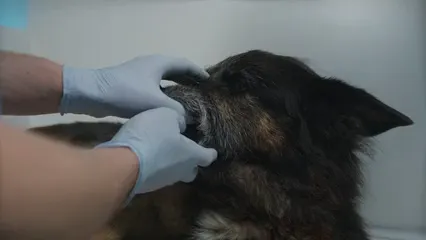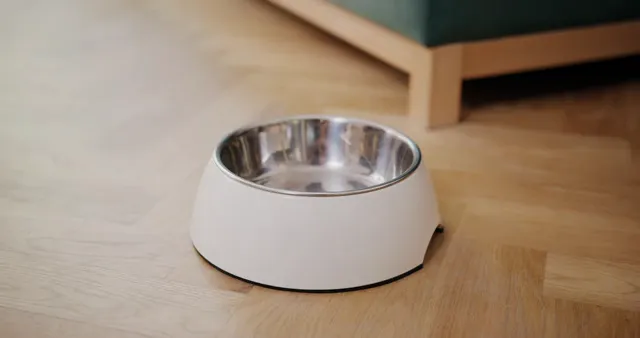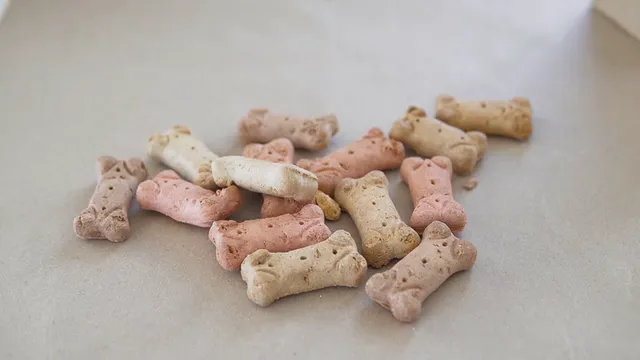Introduction
In the quest to provide our furry friends with the best nutrition, many dog owners find themselves pondering the age-old question: “Can dogs eat celery?” At first glance, this crunchy vegetable might seem like an odd choice for our canine companions, but it has potential health benefits that could make it a delightful addition to their diet.
Celery boasts a hydrating, low-calorie profile, making it a refreshing snack. It’s packed with essential vitamins like A, C, and K, alongside minerals such as potassium and calcium. These nutrients can support your dog’s overall well-being. Plus, the fibrous texture of celery can even help clean their teeth—talk about a double-duty snack!
However, before you toss a celery stick to your pup, it’s crucial to understand how to serve it safely. Not all dogs react the same way to new foods, and moderation is key. Some canines might experience digestive issues if they snack on too much.
In this article, we’ll explore the various aspects of celery as a dog treat, covering everything from nutritional benefits to potential risks. We’ll also discuss how to prepare it safely for your furry friend. So grab a celery stick and a comfy seat—let’s find out if it’s a snack worth sharing!
Summary
Celery is a low-calorie and hydrating vegetable that many dogs find appealing due to its crunchy texture. While it’s not a staple of a dog’s diet, offering celery can provide dogs with essential vitamins like A, C, and K, as well as minerals such as potassium and calcium. Moreover, celery is high in water content, making it a refreshing snack, especially during hot days.
However, it’s essential to introduce celery in moderation to avoid digestive issues and always ensure it is cut into small, manageable pieces to prevent choking. Some dogs may not react well to new foods, so monitoring for any adverse reactions is crucial. Additionally, while celery leaves can harbor pesticides, opting for organic celery can mitigate this risk. You can stock up on organic celery sticks to keep your pup healthy!

In this article, we will explore the benefits of including celery in your dog’s diet, potential risks associated with feeding celery, recommended serving sizes based on dog size, and creative ways to incorporate this vegetable into their meals. By the end, you’ll be well-equipped to decide whether celery can be a crunchy addition to your pup’s snack repertoire.
The Benefits of Feeding Celery to Dogs
When it comes to snack time, celery could be the unsung hero of the veggie world for your dog. Let’s chew on some of the benefits this crunchy delight brings to the canine table!
Nutritional Value
Vitamins and Minerals: Celery isn’t just a water-filled crunch; it’s a nutrient powerhouse! Packed with vitamins A, C, and K, it supports your dog’s immune system and promotes healthy bones. Potassium aids in nerve function, while calcium strengthens those pearly whites. Celery’s fibrous nature is like a nature-made toothbrush, keeping your pup’s dental health in check!
Hydration: Did you know celery is about 95% water? That’s right! This makes it an excellent snack for hydration. Especially during those sweltering summer days when your furry friend needs a refreshing treat, a few celery sticks can help keep them cool and hydrated. And if you’re looking for a way to keep your dog hydrated on the go, consider a dog water bottle for hydration!

Low-Calorie Snack: If your dog is watching their waistline, celery is a guilt-free snack. With only about 6 calories per medium stalk, it’s a fantastic choice for weight management. Instead of high-calorie treats, why not offer a crunchy celery stick? Your pup will love the crunch, and you’ll love the low-calorie count!
Health Benefits
Digestive Aid: Thanks to its fiber content, celery can help regulate your dog’s digestion. Fiber promotes healthy bowel movements, ensuring your pup stays comfortable and happy. Just like humans, dogs benefit from a little fiber boost in their diet. For additional fiber sources, you might want to check out dog food with added vegetables.
Dental Health: Crunch, crunch, crunch! The texture of celery can aid in cleaning your dog’s teeth while they munch away. This natural toothbrush effect helps reduce plaque buildup and freshens breath. Who knew a snack could double as a dental assistant? For added dental care, consider natural dog dental chews!
Potential Anti-Inflammatory Properties: Celery contains antioxidants, which may provide anti-inflammatory benefits. For dogs with joint issues, these antioxidants can be an ally. They help combat inflammation and promote better joint health, keeping your pup sprightly and ready to chase squirrels! For more on joint health, check out Best supplements for dogs with joint pain and arthritis.
Incorporating celery into your dog’s diet can offer various health benefits, especially for those with joint issues. Best supplements for dogs with joint pain and arthritis provides additional insights on supporting your dog’s joint health.
In conclusion, incorporating celery into your dog’s diet offers a variety of health benefits. This crunchy vegetable is not only a nutritious snack but also a delightful addition to their meals. Just remember, moderation is key! So, next time you’re snacking on celery, don’t forget to share a piece or two with your four-legged friend!

How to Safely Feed Celery to Your Dog
Feeding your dog celery can be a delightful treat, but it’s essential to do it safely. Here’s how to prepare and serve this crunchy vegetable to ensure your pup enjoys it without any issues.
Preparation Steps
Washing and Cutting: Start by washing the celery thoroughly. Rinse under running water to remove any dirt or pesticides. If possible, opt for organic celery to minimize exposure to harmful chemicals. Once cleaned, cut the celery into small, bite-sized pieces. This is crucial, especially for smaller dogs, to prevent choking hazards. Aim for slices that are about half an inch thick or smaller. For extra caution, you can also remove the stringy fibers that can be difficult for some dogs to chew.
Cooking Options: You can serve celery raw or cooked. Raw celery retains more of its nutrients and provides a satisfying crunch. However, some dogs may prefer cooked celery, which is softer and easier to digest. If you opt for cooking, steam or boil the celery without adding any salt, butter, or seasoning. Cooking can reduce the risk of choking and make it easier for your dog to chew. Both options have their benefits, so consider your dog’s preferences when deciding how to prepare it.

Serving Suggestions
Snack Ideas: One fun way to serve celery is to stuff it with peanut butter—just ensure it’s free of xylitol, a toxic sweetener for dogs. Spread a thin layer of peanut butter in the groove of the celery stick for a tasty treat that your dog will love. You can also mix in some dog-safe fruits or sprinkle a few kibble pieces for added crunch. For safe peanut butter options, check out pet-safe peanut butter!
Incorporating into Meals: Celery can also be mixed into your dog’s regular food for an extra nutritional boost. Chop it finely and blend it with their kibble or add it to homemade dog meals. This not only enhances flavor but also adds valuable fiber and vitamins to their diet. Just remember to keep portions small, as treats and additions should make up no more than 10% of your dog’s daily caloric intake.

Monitoring Your Dog
After introducing celery or any new food, keep an eye on your dog for any signs of digestive upset—think of it as a new adventure for their taste buds! Look out for symptoms like vomiting, diarrhea, or unusual lethargy. If any of these occur, it may be best to consult your veterinarian. It’s all about ensuring that your pup enjoys their new crunchy snack without any tummy troubles. By taking these precautions, you can safely share the joy of celery with your furry friend!
Alternatives to Celery
While celery is a great snack option, there are many other dog-safe vegetables that you can incorporate into your dog’s diet. Here are a few to consider:
Other Dog-Safe Vegetables
– Carrots: Rich in beta-carotene and low in calories, carrots are a crunchy favorite among dogs. They can be served raw or cooked and are excellent for dental health. For tasty carrot treats, check out organic carrot sticks!
– Green Beans: Packed with fiber and vitamins, green beans are a low-calorie treat that many dogs enjoy. They can be served raw or steamed. For a convenient option, consider organic green beans.
– Bell Peppers: These colorful veggies provide a range of vitamins and antioxidants. Red, green, and yellow bell peppers are all safe for dogs when chopped into small pieces. If you’re looking for dog-friendly snacks, consider dog-friendly bell pepper snacks.
– Broccoli: A great source of vitamins C and K, broccoli can be a nutritious addition. Just be cautious with portions, as too much can cause gas.
– Zucchini: This summer squash is low in calories and high in water content, making it a refreshing snack for dogs. You might also enjoy zucchini chips for dogs.
– Cauliflower: Similar to broccoli, cauliflower can be served raw or cooked. It’s also rich in vitamins and fiber. For a fun twist, consider organic cauliflower florets.

These alternatives can provide variety and nutrition to your dog’s diet while keeping snack time exciting. Just like with celery, remember to introduce any new vegetable gradually and monitor your dog for any adverse reactions. Happy snacking!
When to Avoid Vegetables
While veggies can be a crunchy delight for many dogs, there are specific situations when you should steer clear of them. Certain dogs may have unique dietary restrictions due to health conditions or allergies. For instance, pups with kidney issues might need to limit their potassium intake, making celery a potentially unsuitable choice.
Additionally, dogs suffering from gastrointestinal problems, like irritable bowel syndrome, might find their tummies in turmoil after munching on fibrous veggies. Even healthy dogs can experience upset stomachs when trying new foods, especially if introduced too quickly or in large quantities.
If your dog has a history of food sensitivities, it’s best to check with your veterinarian before adding any new vegetables to their diet. Always prioritize your furry friend’s health and comfort over the variety of their snacks. Remember, just because a food is safe for most dogs doesn’t mean it’s right for yours. Keep an eye on your pup, and if they show signs of discomfort after a veggie treat, it may be time to reconsider those crunchy snacks.

Conclusion
In conclusion, celery can be a healthy and enjoyable treat for your dog when fed in moderation. Its low-calorie and hydrating properties, along with essential vitamins and minerals, make it a great option for a crunchy snack. As with any new food, introducing celery to your dog’s diet should be done with caution, ensuring it’s prepared safely and monitored for any adverse reactions. Always consult with your veterinarian if you have concerns about incorporating new foods into your dog’s diet.
By doing so, you can rest easy knowing you’re making the best dietary choices for your furry companion. Remember, a balanced diet is key to your dog’s health and happiness. So, next time you’re snacking on celery, consider sharing a piece with your pup—just keep it in moderation and watch for any signs of discomfort. Happy snacking!

FAQs
Can dogs eat celery leaves?
While dogs can technically eat celery leaves, it’s best to avoid them. Celery leaves can be harder for dogs to digest and may lead to stomach upset or diarrhea. Additionally, they often contain higher levels of pesticides, especially if not organic. The leaves may also have increased oxalic acid, which can be harmful in large quantities. To keep your pup safe, stick with the crunchy stalks and remove the leaves before offering celery as a treat.
Can dogs eat cooked celery?
Yes, dogs can eat cooked celery! Cooking can make the celery softer and easier to digest, particularly for dogs that might struggle with raw vegetables. However, it’s essential to cook it plain—no salt, butter, or seasoning. While some nutrients may diminish during cooking, celery remains a healthy option. Just remember to cut it into small pieces to avoid choking hazards. Whether raw or cooked, moderation is key!
How much celery can I give my dog?
Serving sizes of celery depend on your dog’s size. As a rule of thumb, celery should make up no more than 10% of your dog’s daily caloric intake. Here’s a simple guideline: – Extra-small dogs (2-20 lbs): 1-2 small pieces (about ½ inch long) – Small dogs (21-30 lbs): 2-3 pieces (1 inch long) – Medium dogs (31-50 lbs): 5-6 pieces (1 inch long) – Large dogs (51-90 lbs): A small handful of pieces – Extra-large dogs (91+ lbs): A handful of pieces Always start with a small amount and watch for any digestive upset. Too much celery can cause gas or diarrhea, so keep an eye on your furry friend!
Are there any other vegetables dogs should avoid?
Yes, several common vegetables can be harmful to dogs. Here’s a quick list: – Onions and Garlic: These can damage red blood cells and lead to anemia. – Avocado: Contains persin, which can cause heart damage and gastrointestinal issues. – Potatoes (raw): Contain solanine, which is toxic to dogs. – Mushrooms: Some varieties can be highly toxic and even fatal. – Tomatoes (green parts): The green parts contain solanine, which can be harmful. Always research before introducing new vegetables to your dog’s diet, and consult your vet if you’re unsure.
Can dogs drink celery juice?
Dogs can drink celery juice in moderation! This juicy treat can be refreshing, especially on a hot day. Start with a small amount—around ¼ cup for larger dogs—to see how your pup reacts. Celery juice can offer hydration and some vitamins, but it shouldn’t replace regular meals or water. Remember, moderation is vital! Avoid adding any sweeteners or other ingredients that could be harmful to your furry friend.
Please let us know what you think about our content by leaving a comment down below!
Thank you for reading till here 🙂
All images from Pexels





